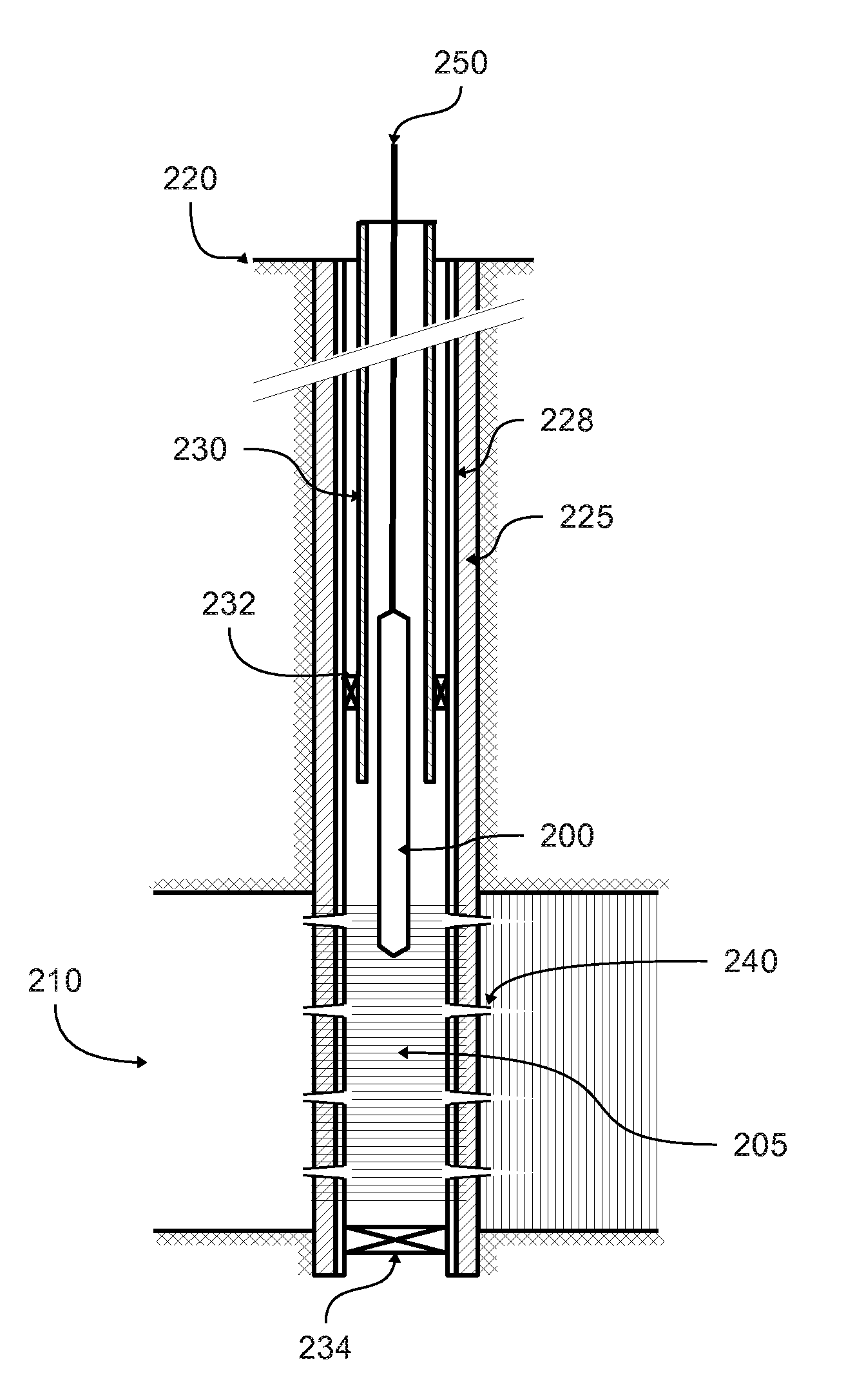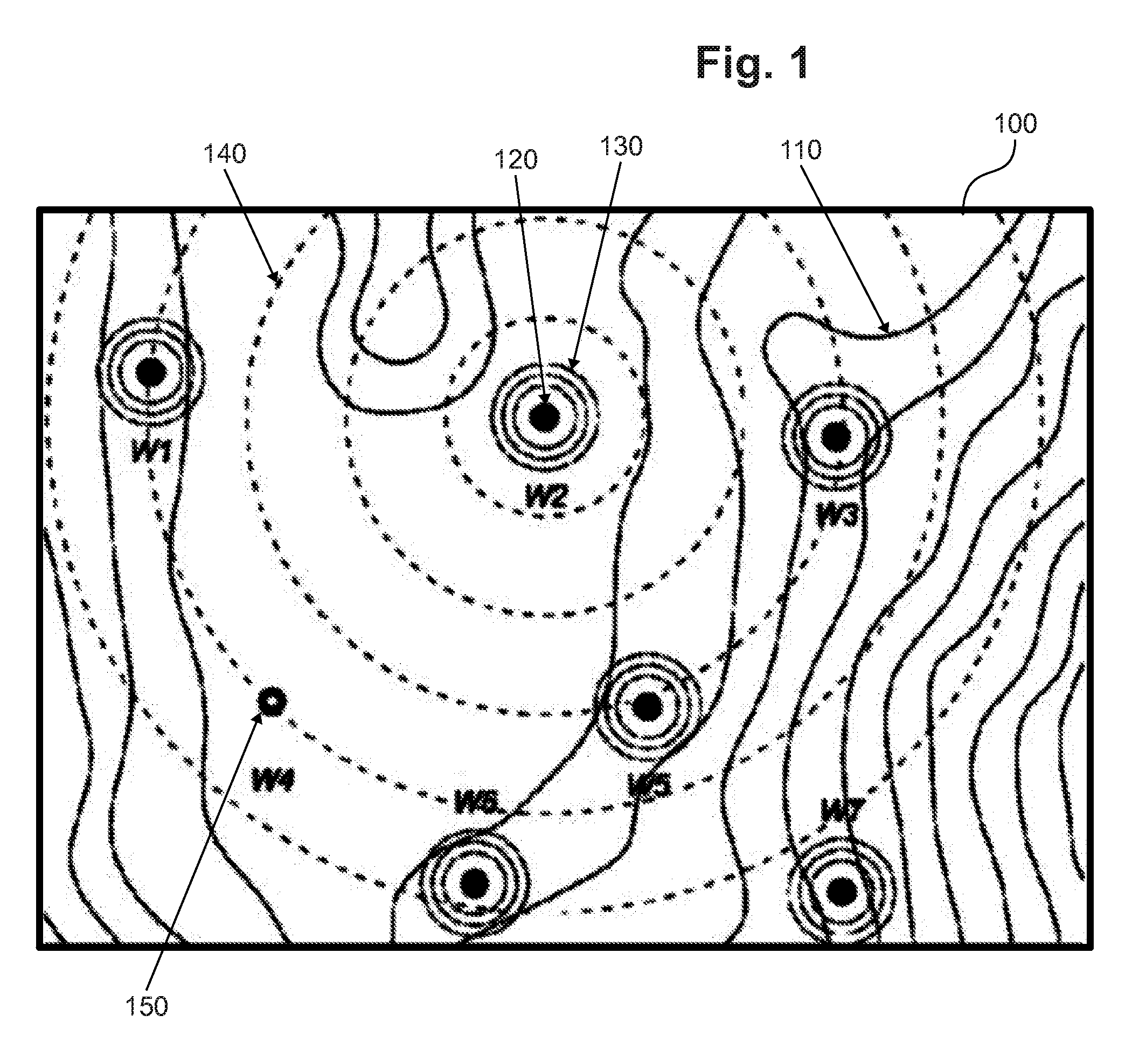System, apparatus and method for stimulating wells and managing a natural resource reservoir
a technology of natural resource reservoir and system, applied in the direction of survey, instruments, borehole/well accessories, etc., can solve the problems of reducing the absolute permeability or interconnection between pores, reducing the flow restriction in the zone surrounding perforations, and gradually decreasing productivity over tim
- Summary
- Abstract
- Description
- Claims
- Application Information
AI Technical Summary
Benefits of technology
Problems solved by technology
Method used
Image
Examples
Embodiment Construction
[0065]The invention provides a system, method and apparatus for stimulating and managing production of a natural resource, such as oil, gas or water, by installing a device in one or more wells within a reservoir, collecting data in real time and applying one or more treatments to the reservoir. The invention provides a tool of the downhole type that can host one or more acoustic stimulation devices, power devices, sensing systems and other actuators that enable the system to apply other treatments in addition to the acoustic treatments. The system is capable of collecting data in real-time, transmitting the data to a data processing center, and processing the data while integrating the real-time data with previously acquired data.
[0066]In the following description, numerous specific details are set forth to provide a more thorough description of the invention. It will be apparent, however, to one skilled in the pertinent art, that the invention may be practiced without these specif...
PUM
 Login to View More
Login to View More Abstract
Description
Claims
Application Information
 Login to View More
Login to View More - R&D
- Intellectual Property
- Life Sciences
- Materials
- Tech Scout
- Unparalleled Data Quality
- Higher Quality Content
- 60% Fewer Hallucinations
Browse by: Latest US Patents, China's latest patents, Technical Efficacy Thesaurus, Application Domain, Technology Topic, Popular Technical Reports.
© 2025 PatSnap. All rights reserved.Legal|Privacy policy|Modern Slavery Act Transparency Statement|Sitemap|About US| Contact US: help@patsnap.com



